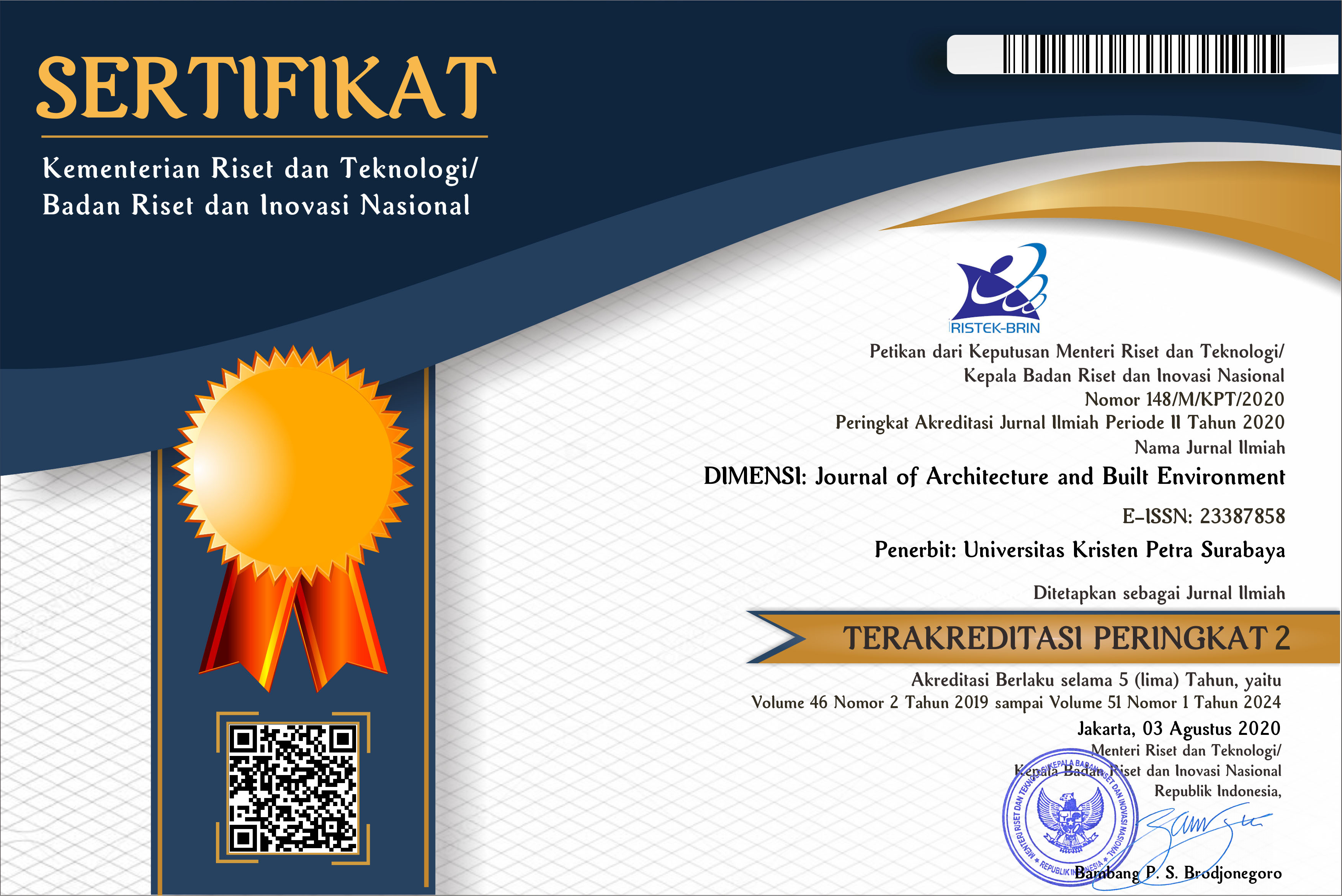KENYAMANAN TERMAL PADA BANGUNAN KOLONIAL BELANDA DI SEMARANG
 :
:
https://doi.org/10.9744/dimensi.32.2.%25p
Keywords:
MV (Predicted Mean Vote), Thermal Comfort, Dutch Colonial Building.Abstract
Dutch colonial building in Semarang categorized in three groups; buildings built without considering the humid-tropical climate, those in which a part of the building was adapted and whole buildings built suitable for the humid-tropical climate. From third the category tested with measuring air temperature, humidity and air movement in building to be processed by using PMV ( Predicted Mean Vote) according to P.O. Fanger. From result of this research can know, which ist the part of building, which have important role and how big its role in improving the building comfort. Abstract in Bahasa Indonesia : Bangunan Kolonial Belanda di Semarang di kategorikan dalam tiga kelompok yaitu; bangunan kolonial yang belum beradaptasi dengan Iklim tropis lembab, baru sebagian dan sudah beradaptasi dengan iklim tropis lembab. Dari ketiga kategori tersebut diuji dengan mengukur temperatur udara, kelembaban dan kecepatan pergerakan udara di dalam bangunan untuk selanjutnya diolah dengan menggunakan PMV (Predicted Mean Vote) menurut P.O. Fanger. Dari hasil penelitian ini dapat diketahui bagian bangunan mana dan seberapa besar perannya dalam meningkatkan kenyamanan bangunan tersebut. Kata kunci: PMV (Predicted Mean Vote) Kenyamanan termal, bangunan kolonial BelandaDownloads
Download data is not yet available.
Downloads
Published
2005-04-26
How to Cite
Purwanto, L. (2005). KENYAMANAN TERMAL PADA BANGUNAN KOLONIAL BELANDA DI SEMARANG. DIMENSI (Journal of Architecture and Built Environment), 32(2). https://doi.org/10.9744/dimensi.32.2.%p
Issue
Section
Articles
License
Authors who publish with this journal agree to the following terms:
- Authors retain copyright and grant the journal right of first publication with the work simultaneously licensed under a Creative Commons Attribution License that allows others to share the work with an acknowledgement of the work's authorship and initial publication in this journal.
- Authors are able to enter into separate, additional contractual arrangements for the non-exclusive distribution of the journal's published version of the work (e.g., post it to an institutional repository or publish it in a book), with an acknowledgement of its initial publication in this journal.
- Authors are permitted and encouraged to post their work online (e.g., in institutional repositories or on their website) prior to and during the submission process, as it can lead to productive exchanges, as well as earlier and greater citation of published work (See The Effect of Open Access).

















